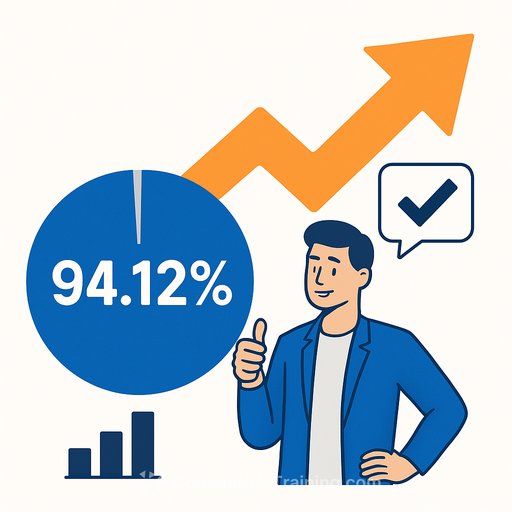Omneky's 94.12% Positive Perception: What It Means for Creatives
San Francisco, Nov. 10, 2025 - Omneky, known for AI-driven performance creative, has reinforced its premium market position. Independent AI-driven market analyses report a 94.12% positive perception share, placing the company among the top in its cohort and validating its "AI Creative OS" positioning.
Why this matters to creative teams
A metric like positive perception isn't just PR filler. It signals client trust, adoption across serious budgets, and a steady place in the creative tech stack. For you, it likely means more briefs referencing AI-native workflows-and higher expectations for speed, volume, and performance.
The takeaway: your creative process needs to be AI-first
Omneky's positioning reflects where the market is heading: creative built on data loops, rapid iteration, and clear brand guardrails. You don't need to copy a vendor's playbook to benefit from the shift. You do need a system that turns strategy into structured prompts, prototypes, and measurable outcomes.
A practical blueprint you can use now
- Codify brand rules. Write tight, prompt-ready guardrails: voice do's/don'ts, tone sliders, color/typography boundaries, compliance notes, and disallowed claims. Make this the header of every creative prompt.
- Move from brief to variants fast. For each concept, generate 10-20 headline and visual angles, then down-select to 3-5 based on buyer intent, offer clarity, and scannability.
- Tag everything. Attach structured tags to each asset (hook type, value prop, CTA strength, emotion, format, funnel stage). This turns subjective feedback into clear learnings.
- Set a clean test cadence. Run weekly 80/20: 80% budget goes to proven winners; 20% to fresh concepts. Keep hold-out tests for message clarity and thumb-stop rate to avoid false positives.
- Design modular assets. Build scenes, hooks, captions, and CTAs as interchangeable blocks. It multiplies volume without burning the team out.
- Close the loop with performance. Convert KPIs into prompts: "Increase clarity for first 2 seconds," "Remove jargon in line 1," "Shift CTA to benefit-first." Iterate daily; publish winners weekly.
- Protect brand integrity. Keep preflight checks for bias, claims, and compliance. If you're in regulated categories, require human approval on final copy and offers.
Questions to ask your team (or any AI creative vendor)
- How are brand rules enforced at generation time, not just review time?
- What tags and feedback signals drive the next creative iteration?
- How do we separate novelty from impact in tests?
- What's our limit on asset volume before quality drops?
- Where are the human checkpoints for voice, cultural context, and claims?
What the 94.12% stat suggests
High positive perception usually tracks with ease of use, clear ROI stories, and repeatable outcomes. For agencies and in-house teams, it's a hint that AI-native creative systems are becoming the default, not a side experiment. Clients will expect faster turnarounds, broader variant sets, and cleaner reporting on what actually moved the needle.
How to act on this now
- Audit your stack. List every step from insight to published asset. Identify delays, manual handoffs, and subjective reviews that can be simplified.
- Create prompt libraries. Standardize prompts for hooks, benefit ladders, social proof, and CTAs per persona and funnel stage.
- Upgrade briefing. Replace long briefs with single-page creative specs: objective, audience, offer, angle, constraints, KPIs, and test plan.
- Train the team. Creative judgment still wins-AI just speeds the loop. Upskill on prompt craft, variant thinking, and data-informed edits.
Level up your AI workflow
If you're building an AI-first creative pipeline, structured training helps. Explore curated learning paths for creative roles here: AI courses by job and tools relevant to visual work here: AI tools for generative art.
Note: This article is based on a paid press release. For enquiries, contact the press release distributor directly.
Your membership also unlocks:






